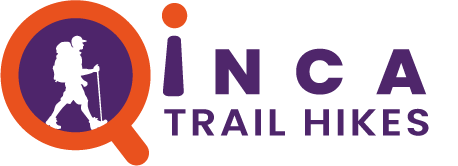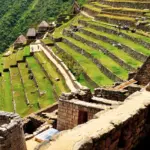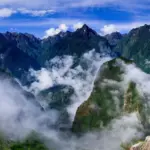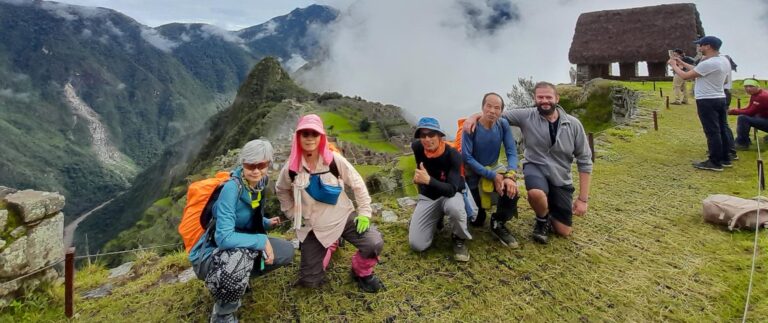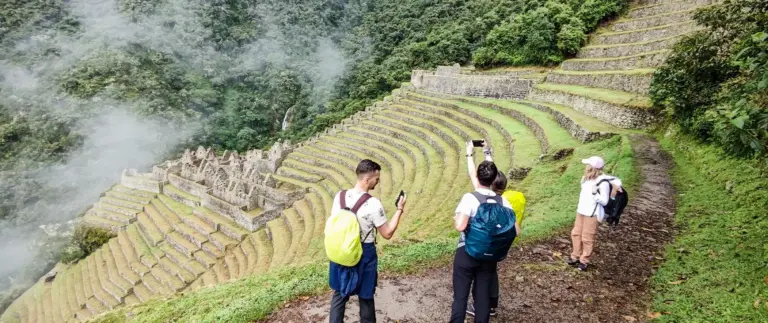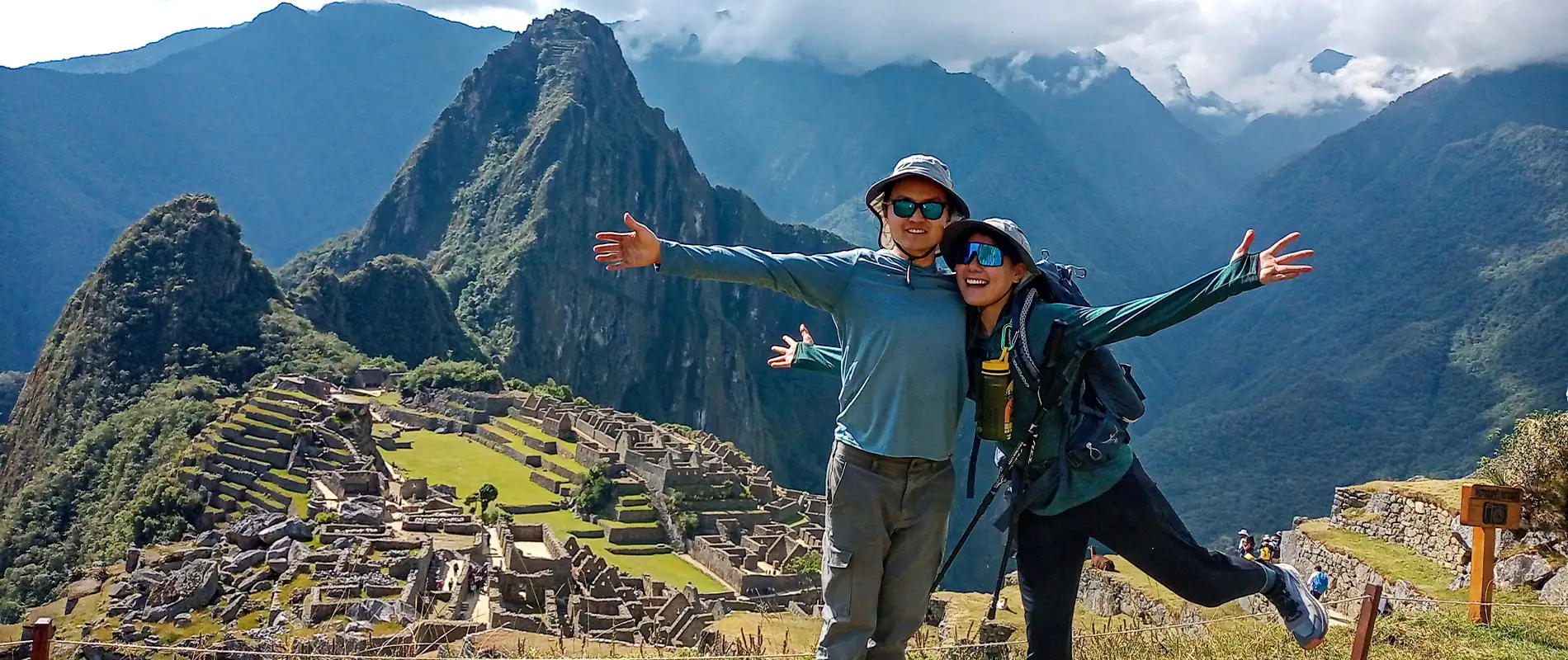
Hiking The Inca Trail is one if the most classic outdoor experiences, and for many one of the best hikes in the entire world. Walk in the footsteps of the Ancient Inca. Walk this world famous path through the Sacred Andean Valley passing different Inca ruins. Eventually climbing into the cloud forest that is home to Machu Picchu. Read this article to learn the most current Inca Trail information.
The Inca Trail was originally used as the main transport and message route for the whole Inca Empire. Also as a pilgrimage where the Incas carried out ceremonies and rituals at the various mountain peaks, but today it’s a tourist attraction bringing people from all over the world to follow the path of the Inca.
There are few multiday hikes in the world that rival the Inca Trail, there’s the Tour du Mont Blanc, Camino De Santiago, or the Application Trail. None of these trail’s destinations offer anything similar to what the Inca trail does, the Inca Citadel of Machu Picchu.
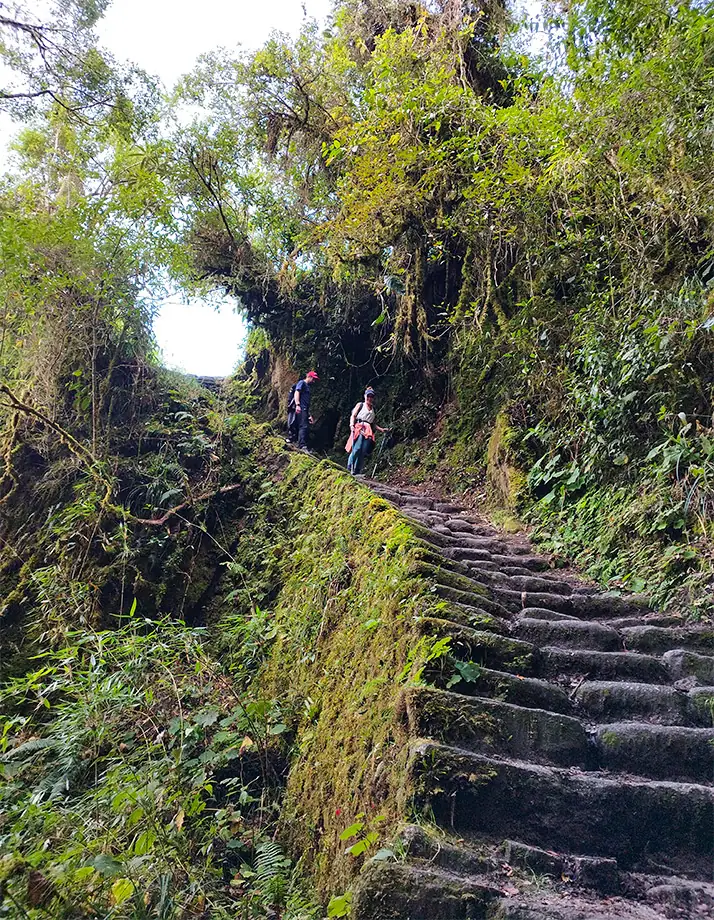
The Inca Trail?
Having the largest empire in the history of the Americas the Tawantinsuyu (Inca Empire) civilization reigned from 1438 to 1572 . Tawantinsuyu means the “four regions of the sun” in Quechua, and describes the 4 regions of the empire comprised of Chinchaysuyu to the north, Antisuyu to the east (Amazon jungle), Qullasuyu to the south and Kuntisuyu to the west. It was only later when the Spanish arrived that the name “El Imperio Inca” was coined. The empire’s territory spanned massive distances, from the snow capped peaks of the rugged Andes Mountains to the barren deserts of coastal Peru and Chile. Tawantinsuyu created a massive road network, called Qhapaq Ñan (royal road), in order to connect their empire. The network spanned over 30,000km reaching multiple different modern day countries.
Cusco was the center of Tawantinsuyu, political center, and home of the emperor Sapa Inca (sole ruler). Qhapaq Ñan, the Inca Trail, started in Cusco and covered outward to the rest of the empire, reaching as far north as Colombia, all Peru, far south as Chile, connecting even parts of Argentina and Bolivia. The advanced road network allowed for effective transportation of goods, and communication between cities, and the movement of the Incan Army.
The famous Inca Trail trek to Machu Picchu makes up just a fragment of Qhapaq Ñan. But was an important stretch used by Pilgrims and the Sapa Inca himself, on their religious journey to the city of Machu Picchu.
Why is the Inca Trail World Renowned?
The Inca Trail is well known all over the world for various reasons.
- Historical Importance: A small part of the greater Qhapaq Ñan road system, the Inca Trail allows tourists to walk the same path as the Incan people. This trail offers you the chance to experience the Incan culture first hand.
- Pristine Nature: During the trek you will travel through various different landscapes including the lush Andean Cloud forest, high mountain passes and stunning mountain valleys. Additionally, the journey will take you past multiple Incan ruins which offer amazing views of the surrounding landscape.
- Difficulty: However the rewards of completing the Inca trail are immense, the journey is not an easy one. You will be hiking for days on uneven ground up steep stone steps in some of the highest elevations in the world. This journey requires a certain level of physical fitness and endurance making this hike a once in a lifetime experience for many adventurers.
- Limited access: The number of hikers allowed on the Inca Trail is limited by the Peruvian Government. This decision was made in order to preserve the environment and cultural heritage of the trail. The regulations have succeeded in maintaining the trail’s adventurous allure as well as it’s physical state.
Permits
To walk the Inca Trail you will need to go with a licenced Inca Trail Operator. Once you have found your operator, they will check availability for your desired date. There are 500 permits for the 4 day Inca Trail daily. This may sound like a lot of permits but when you consider that this 500 includes, guides, porters and cooking staff this does not leave many permits. For this reason you need to book in advance, for the high season at least 6 months.
Inca Trail to Machu Picchu MAP
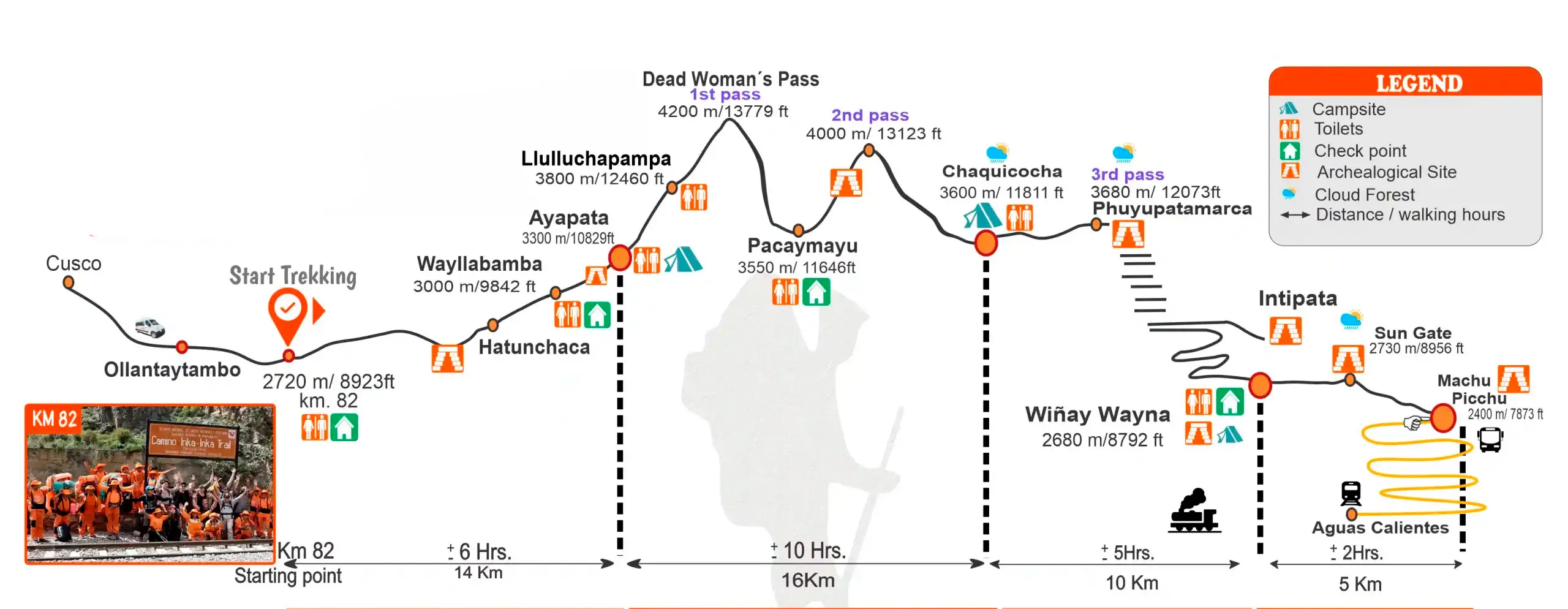
Which Archeological sites will you explore along the Inca Trail?
There are many archeological sites throughout the Inca trail such as, Salapunku, K’anabamba, Patallacta/Llactapata, Willkarakay, Runkurakay, Sayacmarca, Conchamarka Phuyupatamarca, Inti Pata, Winay Wayna, Intipunku and of course Machu Picchu. Below we will go over each archeological site so you can decide which sites to visit.
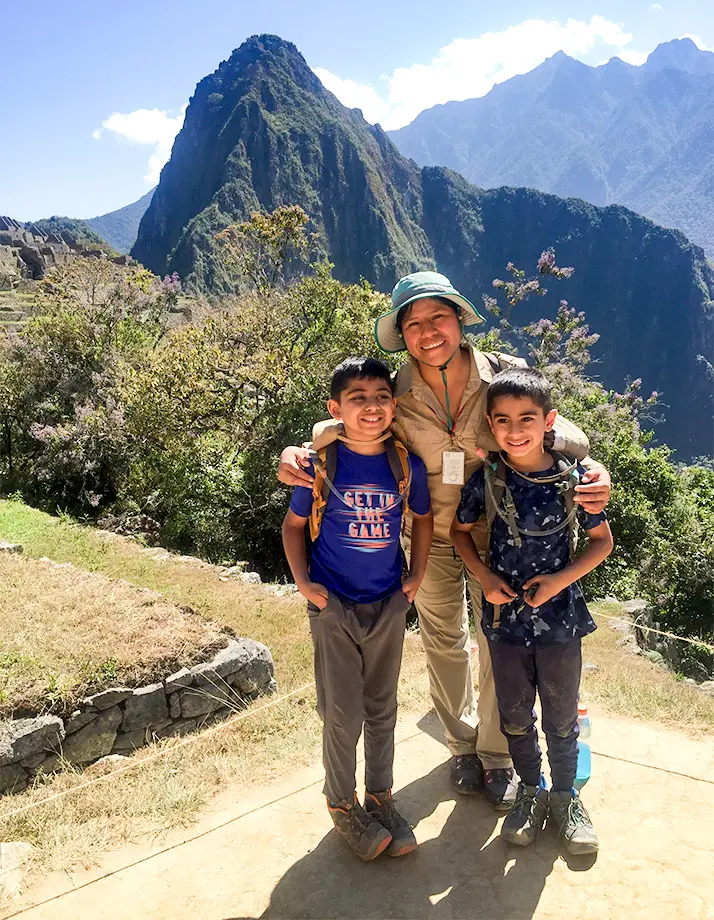
- Salapunku: At the start of the trek the first archeological site you will see is Salapunku. This site is only visited by those doing the 5 day Inca Trail, but you get a decent view from across the river. Thought to be a ceremonial site, Salapunku is surrounded by sacred mountains and may have been the first gate on the Inca Trail regulating access to Machu Picchu.
- K’anabamba: Similarly, K’anabamba is located on the opposite side of the river and is only accessible on the 5 day trail. This site is thought to have been a potential a rest point for travelers/pilgrims on the Inca trail.
- Patallacta/Llactapata: An old Inca village this site has around one hundred houses and accommodated many occupants, including travellers, and guards. Agricultural terraces can also be found at this site. This is the first site that you can physically visit on the 4 day Inca Trail.
- Willkarakay: This site is next to the ruins of Llactapata archeologists believe it was mainly a storage site or maybe another checkpoint.
- Runkurakay: Because of its location Runkurakay is thought to have been for religious ceremonies and dedication to the moon. The main square is circular in shape and has wonderful views of the Urubamba valley.
- Sayakmarka: An urban center which is believed to have housed around 200 people. Sayakmarka also has a main temple that would have been dedicated to the Inca Sun god Inti. As with most of the other temples along the route, this site had agricultural terracing used for crop production.
- Conchamarka: A small site close to Sayakmarka, it is believed that this may have been private property of a high standing Inca. This site also had terracing as well as many residential buildings.
- Phuyupatamarca. Know by the Inca people as “The city above the Clouds” because the site looks down upon the mist and fog that gathers below, high above the Urubamba River. The site features an urban center, there are various squares and structures and even a large sacred rock. This is one of the most famous sites on the Inca Trail your guide will give you a tour of the site and explain its history.
- Intipata. This mean a place in the sun, this site was potentially used by the ancients as a surveillance post as from its location high on the mountain side it would have been easy to spot people on the trail to Machu Picchu. Also there are large agricultural terracing and was thought to be an important site for the cultivation of food.
- Winay Wayna. A spectacular ruin in a scenic location which is thought to have the main purpose of food production for the Cusco region. Located high on the mountainside the site features large terracing and small structures thought to be housing. Due its closeness to Machu Picchu another theory is that this was the last resting place before arriving to Machu Picchu. See that the wonderful orchids found around the Winay Wayna area.
- Intipunku. This is the Sun Gate, also the last Inca site before you arrive to Machu Picchu. This site is believed to be the main entrance to the Inca citadel. From here the Inca see who was leaving and entering Machu Picchu. Archeologist believe ceremonies were also held at the Sun Gate to Inti the most important god in the Inca Culture. From Intipunku you will get your first view of Machu Picchu, see panoramic views that will live in your memory, so dont forget to take many photos.
- Machu Picchu. Constructed by the most famous Inca, Pachacutec Yupanqui in the 15th Century. The site was finished by his son Tupac Yupanqui. It is thought that around 750 people maximum lived there. The site was only inhabited for around 100 years and later abandoned, for reasons which have never been confirmed. The Spanish was never discovered the Lost City of the Incas, for this reason it remains mostly intact. Machu Picchu was discovered by Peruvian explorer Agustin Lizarraga in 1902, but the American explorer Hiram Bingham bought the site to the world in 1911 when he rediscovered the site.
Campsites Along The Inca Trail
Campsites along the Inca Trail will depend on how many days your tour. The best campsites book out fast, for this reason booking in advance is essential.
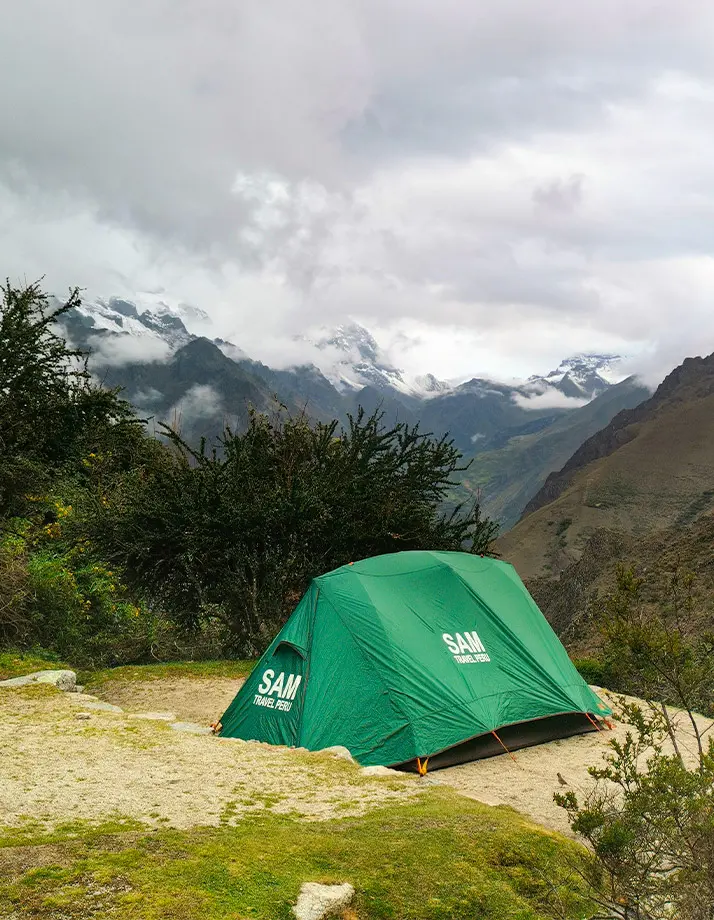
- Mescay: The village of Mescay is the first stop on the Inca Trail. Normally hikers stop here to eat lunch and continue on. If you are on the 5 day tour your group may stay here the night. The village has a few shops where hikers can resupply on food, water and various hiking supplies.
- Tarayoc: One of the first campsites for the 5 day tour Tarayok is another small village on the trail. The village is supported by tourism and has a small restaurant where hikers, guides, and porters can stop for lunch.
- Hatunchaca: Another small village on the trail Hatunchaca is a potential campsite for the 5 day tour. Mainly a farming community with approximately 80 inhabitants, the villagers here are generally very welcoming and offer showers, campsites, and supplies to hikers.
- Wayllabamba: The final village on the trail, the first campsite on the classic 4 day tour and a campsite for the 5 day tour, Wayllabamba is the largest village on the trail. Housing around 200 people Wayllabamba is mainly a farming village. There are shops, a school, and small medical facility. Here is your last opportunity to buy supplies.
- Ayapata: This is the start of the protected area on the Inca trail and one of the best campsites. The site is only for the 4 day tour. Located at a high elevation of 3,300m (10800ft), spot glaciers and have great views of the various mountains in the area. Camp in nature as there are no building or civilization here. Pause a moment to appreciate this beautiful landscape, take in the tranquility and prepare yourself for day 2.
- Lluluchapampa: An option for your second night if you’re on the 5 day tour only, this site has the highest elevation of all the campsites, 3,850 meters (12,600ft). The high elevation can make it cold at night, especially during the dry season. Lluluchapampa has amazing views of the surroundings and is a perfect place for star gazing. The last campsite before summiting the Inca trail relax and recover under the starry night sky.
- Pacaymayu alto: Nestled in a valley between two mountains Pacaymayu is an option for your second night. This site also has a small creek, additionally there are terraces nearby that were used for agricultural purposes. Keep your eyes peeled for the local fauna in this area you may spot a spectacle bear or condor.
- Chaquicocha: The preferred campsite for the second night, the views here are some of the best on the trail. Feast your eyes on the Vilcabamba Mountain range and peer down into the Amazon basin. You’re still at high elevation 3,660m (11,800ft) so the nights can be cold.
- Phuyupatamarca: Situated high above the Urubamba river, Phuyupatamarca means “town above the clowds” and is named after the adjacent Inca ruins of the same name. This campsite is only for the 5 day tour. With an elevation of 3,650m (11,900ft) the views here are spectacular. Close to the ruins of the same name you have a chance to explore the ruins and the surrounding area.
- Wiñaywayna: Only for the 4 day Inca Trail tour, and the last campsite on the trail before reaching your destination of Machu Picchu. Wiñay Wayna has an elevation of 2,650m (8,690ft) and is the lowest campsite on the trail. Similar to Phuyupatamarca, this campsite has ruins of the same name nearby. Take some time to explore the ruins and prepare yourself for tomorrow’s grand finale of Machu Picchu!
Weather Conditions
In the high Andes the weather can be changeable. One day it can be sunny the next rainning. The trail passes through a Andean Cloud Forest which is humid and mild region. The sun can be strong so you need to be careful of sunburn. Also on the same day you could be soaking wet. We recommend that you are prepared for all weather conditions, be sure to always have good raingear and sunscreen with you at all times.
Best Time to Hike The Inca Trail
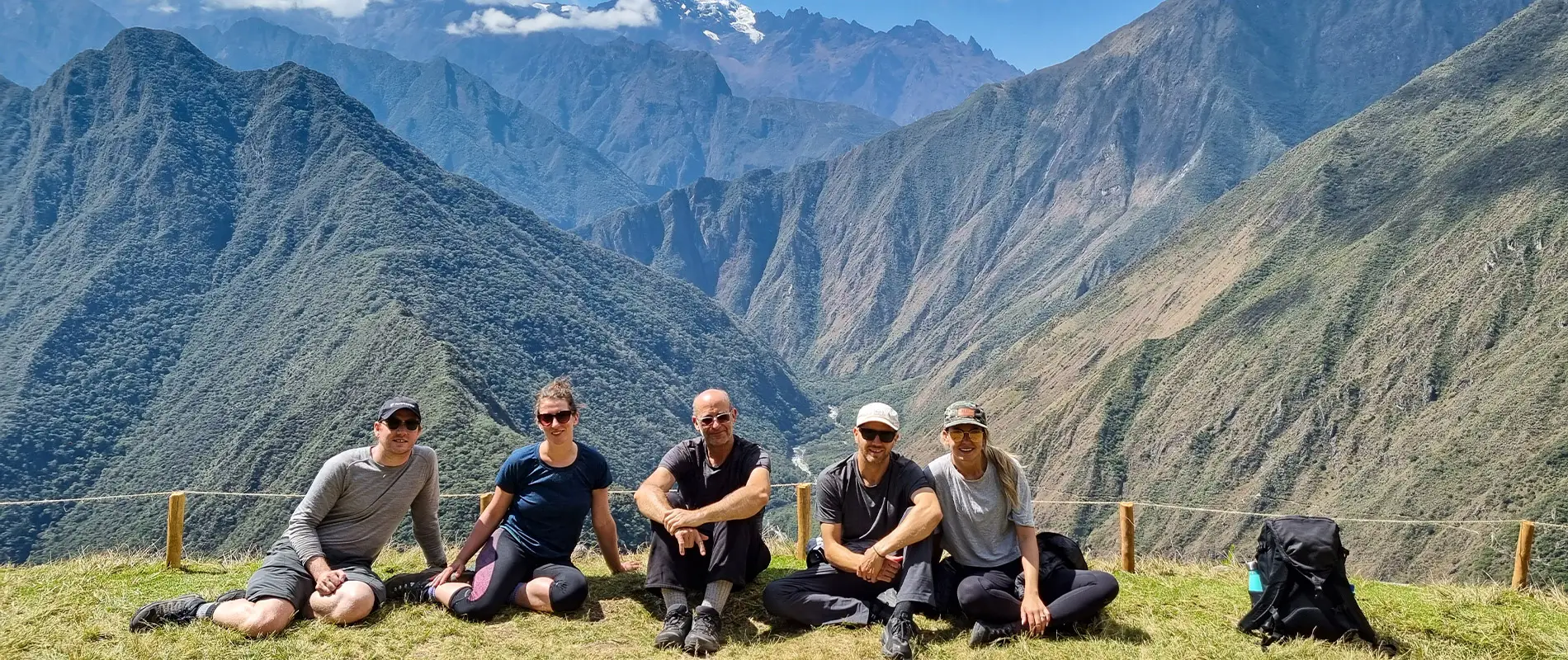
Most people agree the best time to hike the Inca Trail is in the dry season, which consequently is in the Peruvian Winter. This season starts in May and goes until the end of October. There is virtually no rain during this time of year which makes for great views and perfect pictures. The opposite is true for the rainy season which takes place in summer and ranges from November to April. The rain tends to push away the crowds so you may have the trail all to yourself, however the rain and fog could block your view of Machu Picchu.
*** Please note the Inca trail is closed during February for maintenance.
January
January brings with it a lot of rain on the Inca Trail, and it will rain everyday. Having said this it mostly only rains for an hour or 2 in the afternoon and later the sun will come out. One of the highlights of January is that the flowers and the vibrant rainbows are great for the photographers. Crowds are fewer as the rain detours most of the tourists.
- Pros: Rains usually happens in the afternoon or for a few hours, and the sun will appear. This is the season of orchids, rainbows, and spectacular pictures with mist and clouds. The temperature variation between day and night is from 19°C (66°F) in the day to 7°C (45°F) at night.
- Cons: Trail conditions are muddy and slick.
February
Closed for maintenance during February, there are alternatives to the Inca Trail. Machu Picchu is open year round and there are various different ways to get there. We DO NOT RECOMMEND the Salkantay or Choquequirao due to the heavy rains there is a high risk of landslides, however it is open. It’s recommended to take one of the other alternative treks such as Lares, Quarry Trek, or Huchuy Qosqo. Additionally the train runs all year and is always an option if you don’t want to hike.
March
This is the first month after the maintenance, so this is when the trail will be in the best conditions. Facilities such as campsites and toilets will be clean and the trail and the bridges have been newly repaired. March is still in the rainy season so expect some rain. This month is not as bad as last months and the crowds have not returned, so some consider March to be a great time of year to do the Inca Trail.
- Pros: Clean facilities, new bridges and restored trails
- Cons: Landslides and delays are still a risk
April
April is a great month the hike the Inca Trail. This is the end of the rainy season and the crowds are nothing like the busiest months of the year. The trail is calm with fewer hikers and the trail is lush and green from the rainy season. If you dont like the crowds consider trekking in April.
- Pros: Temperatures are fairly mild both during the day and at night with averages ranging from 19˚C (66˚F) to 5˚C (41˚F). Longer days and clear night skies
- Cons: More tourists than the previous months the trail can also be a bit muddy and slick due to the rain
May
May is the first official month of the dry season, the weather is better and with that comes the crowds. You will need to prepare yourself for long lines at all sites and to enter Machu Picchu. Apart from the crowds, May is a great time to hike the Inca Trail, this being some fo the best weather of the year.
- Pros: Good weather with clear skies both day and night makes for great photography and star gazing. The temperature ranges from 19˚C (66˚F) in the day to 3°C (37°F) at night
- Cons: Huge crowds and long lines make for a more busy time of year. Make sure to book your tours and hotel stays at least a few months in advance. Colder temperatures at night
June
June is a wonderful time to consider hiking the Inca Trail and also to visit Cusco. In the height of the dry season this is the best weather you will experience. But Cusco and the Inca Trail will be busting at the seams with tourists. It is not common to get rain but you still must be prepared for all weather conditions on the trail.
- Pros: Near perfect weather during the day provides excellent views while hiking. Average temperatures range from 19˚C (66˚F) in the day to 1°C (34°F) at night.
- Cons: The huge crowds can potentially exceed the daily allowance, lines are long for every part of the journey. Strong sun with a high chance of sunburn in the day, cold temperatures at night.
July
The same weather conditions as June just a bit colder at night, this is the coldest month of the year. Cusco and Machu Picchu in July are completely packed with tourists so expect long waits at every turn. Trail conditions are some of the best of the year warm and dry during the day but cold at night.
- Pros: Good weather offers great views of the surroundings. Average temperatures range from 19˚C (66˚F) in the day to 0° C (32°F) at night.
- Cons: This month has the most tourists of the year making everything overcrowded, book accommodation and tours in advance. Coldest month of the year
August
August is the last month of the high season so this means everything will be crowded. Expect to see many tourists from Europe and North America as this is their holiday season. The weather is still wonderful this time of year.
- Pros: Clear skies both day and night, great trail conditions. Temperatures vary from 20˚C (68˚F) in the day to 3° C (37°F) at night.
- Cons: Huge crowds at all attractions including hiking trails. Hotels and tours are more expensive this time of year, plan ahead and book everything early.
September
In September crowds are starting the lower as the high season is technically over. Most days are sunny but the rain will start to come. September is a great time to do the Inca Trail and is considered a shoulder season. The temperatures are a bit warmer this month.
- Pros: The crowds are reduced compared to the months before. Average temperatures increase 21°C (69°F) and lows around 5°C (41°F).
- Cons: Be prepared with raingear the rain can sneak up on you!
October
The first month of the rainy season, but there are still plenty of nice sunny days this time of year. Make sure you still have sunscreen on hand. Summer break having ended in the Northern Hemisphere, you will see much smaller crowds as we enter the rainy season. This is a great month if you want a balance between smaller crowds and good weather.
- Pros: Smaller crowds on the trail and your last chance of having good weather before the rain comes. The temperatures range from 21°C (69°F) to 5° C (41°F).
- Cons: With both sun and rain a potential have sunscreen and raingear on you at all times.
November
November brings with it rain and the trail can be slippery. But this means that generally it will rain in the afternoon for an hour or 2 then it will be fine. Temperatures in the region will rise slightly and nights will be warmer.
- Pros: Less hikers on the trail, the temperatures start to warm up particularly in the night. Last chance to have clear skies and good views of Machu Picchu
- Cons: The rain can cause unpleasant conditions on The Inca Trail and obstruct views of Machu Picchu
December
The holidays at the end of the month make December the most busy month of the rainy season. The Inca trail will have lush green vegetation and the combination of rain and sun makes for frequent rainbows adding a magical sentiment to this hike.
- Pros: Lush green vegetation makes for scenic views. Warmer weather than the dry season, temperatures averaging from 22°C (71°F), to 6°C (42°F).
- Cons: Campsites and trails can be wet and muddy making for difficult hiking conditions.
Inca Trail Options
There are many options when deciding to hike The Inca Trail, but there are two main categories, the Classic Long Trail, and the Short Trail. For the classic long trail you have the option of choosing the 4 day hike, or the slower 5 day hike. The short hike has only one option and is 2 days one night on the trail. Remember The Inca Trail is closed in February for maintenance.
The Standard Classic Inca Trail is more popular and can sell out quickly make sure you book your tour in advance. The shorter option however is not as popular and is a great option if you want a more relaxed hike or if the classic hike sells out. Both options take you to Machu Picchu through the famous Intipunku “Sun Gate”.
Trails are separated into long and short options
- Classic Inca Trail 4 days 3 nights:
- Slow Inca Trail 5 days 4 nights
- Salkantay 6 days 5 nights
- Luxury Inca trail 4 days 3 nights
- Short Inca Trail 2 days 1 night
- Short Inca Trail 2 days with Camping
Inca Trail FAQs
Every year, thousands of people from around the globe come to Peru to trek the trail and see the Inca ruins. You probably have many questions about The Inca Trail. Here we will answer some of the most frequently asked questions about the Inca Trail to help you better prepare for your adventure.
WHAT YOU HAVE TO TAKE WITH YOU ?
- Original Passport: (Must be the same you used for booking your trek)
- University ID Card: (Only if you booked as a student)
- Daypack: With enough room for a lunch
- Water: 2 to 3 liters of water (We reccommend Camelbak style bladders )
- Boots: Good comfortable broken in hiking boots with good tread
- Sleeping Bag: 4 season bag (can be rented from your tour guide)
- Headlamp or flashlight: Headlamp frees up hands (Back-up flashlight & batteries are recommended)
- Toilet paper: Make sure to bring your own.
WHAT TO PACK IN THE DUFFEL BAG?
As a Direct Local Tour operator we provide you with a duffel bag at your briefing and INCLUDE an extra porter who will carry up to 7 kgs or 15 lbs. including your 2.5kg sleeping bag, mattress and extra clothing.
- Warm clothes
- Comfortable shoes for camp
- Quick dry towel. We provide small ones, you might prefer your own
- Small bottle of soap: we provide warm water each day to wash
- Large plastic bags will be provided at the office — Please ask for them
- Sleeping bag: It has to be at least -15ºC – This can be rented from us for $20USD
TOILETRIES
- Hand Sanitizer
- Wet wipes
- Toothbrush and toothpaste
- Personal medications
- First aid kit
WHAT TO PUT IN THE DAY BACKPACK ?
We highly recommend a small backpack 30 – 40 Liters for hiking. A big backpack will not be allowed into Machu Picchu. The remainder of your belongings will be in your duffel bag at camp.
- Drinking Water: Please supply your own water until the first lunch spot, then we will provide you with cold boiled water at every meal. Please bring your canteens or bottles
- Sun Hat
- Sunscreen
- Headlamp or flashlight
- Rain gear
- Snacks like chocolate bars, ice cream, cereal bars, protein bars
- Coca leaves
- Rain plastic poncho
- Gloves
- Camera
- Hand sanitizer
- Toilet paper and small plastic bag for waste
- Extra Money for Souvenirs, Drinks & Tips
